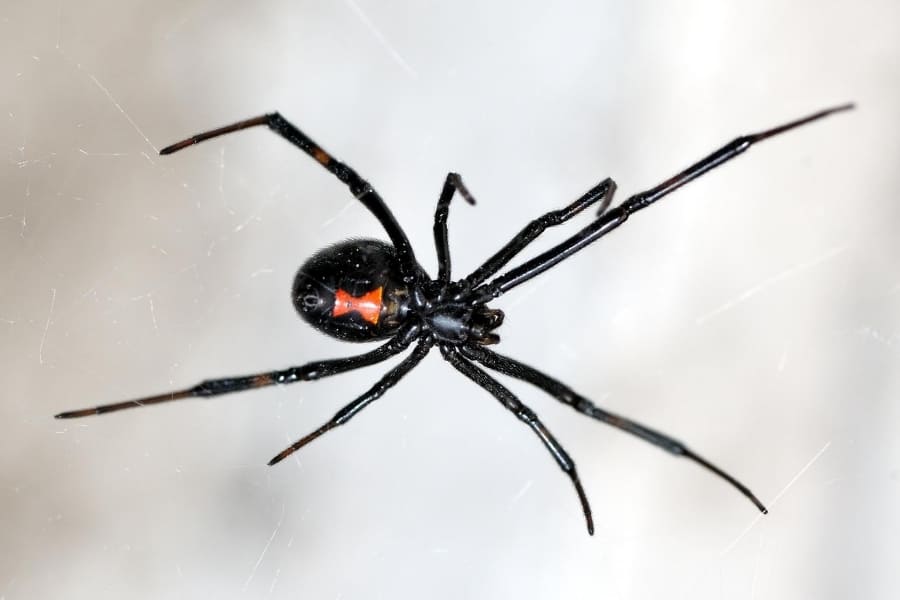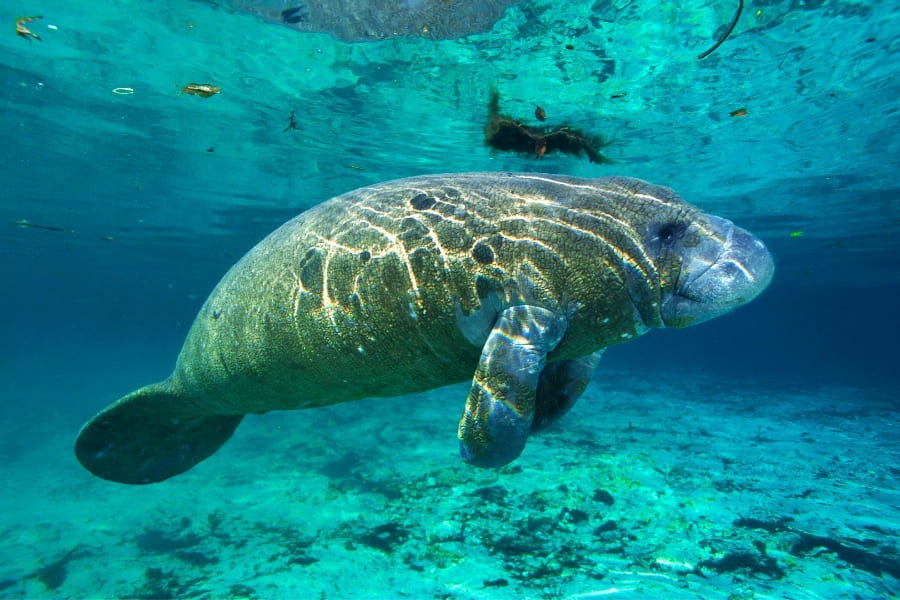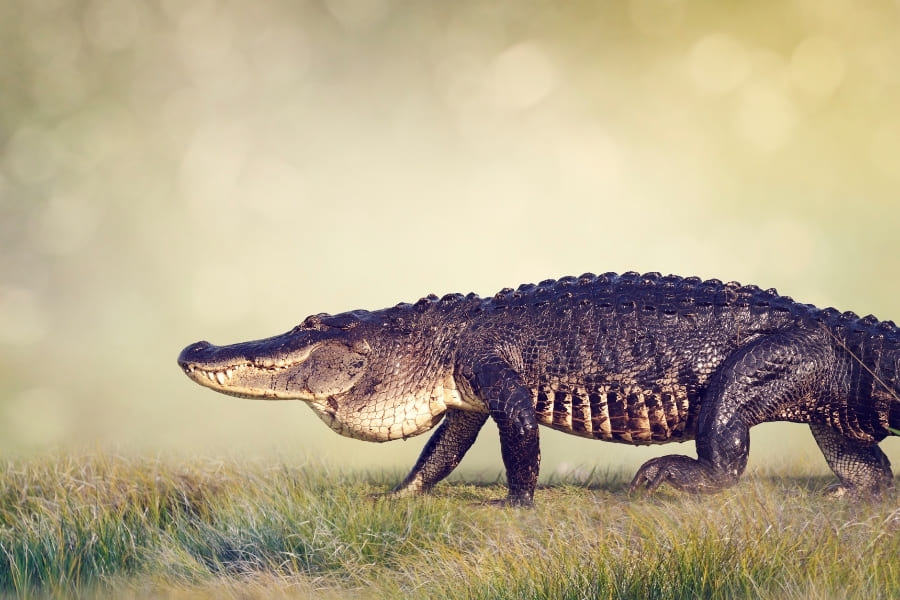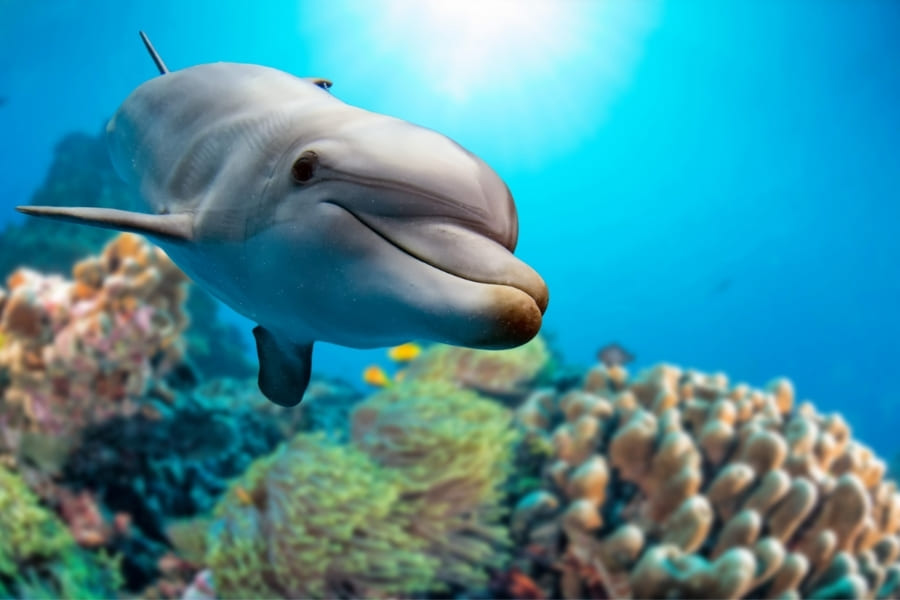Some people get cold shivers even thinking of them, others are fascinated by these perfectly adapted carnivores – spiders. The eight-legged animals populate the entire state. And they are not only found in the wild.
Spiders also feel comfortable in houses, cellars and garages. You can hardly blame them, because there, they find protection, food and warmth. Encounters with humans cannot always be avoided and sometimes have serious consequences.
In this article, we will present the dangerous spiders of the Sunshine State and how to deal with them. You will also learn how you can avoid accidents and what to do in case of a spider bite.
Spiders in Florida – important Facts
Spiders are highly complex animals that can look back on 400 million years of evolution and have diversified into many groups. Here are the most important facts about these crawlers:
Characteristics and Size
Like all spiders, the species found in Florida can be identified by the following characteristics: eight legs, a bipartite body with a thin link in between, two chelicerae (jaws) and up to eight eyes.
Their size ranges from tiny jumping spiders and orb-weavers to the wolf spider, which can grow as large as a grapefruit. Even more impressive in size are giant crab spiders and tarantulas.
Did you know? Female spiders are usually much larger than the males. This can result in the latter serving as an involuntary snack after the mating act.
Behavior and Hunting
Florida’s spiders differ not only in size, but also in their behavior.
Most spiders build webs in order to catch insects and other small animals. So-called funnel weavers also prefer to hunt with minimal effort. These species remain motionless in front of their caves. When pray approaches, they pounce at it with lightning-fast reflexes.
However, there are also more active hunters among the arachnids. Jumping spiders, which populate Florida’s forests and meadows, use their camouflage, speed and jumping power to kill prey. Unlike most spiders, they do not build webs, although some species such as the green spider use a safety thread when jumping.
Reproduction
As we already mentioned, mating is not a harmless undertaking for male spiders. Some species perform a certain ritual or bring the female a „gift“ in the form of a fly in order not to become food themselves. Others weave the female firmly into her own net as a precaution.
If the mating act was successful, the female builds a cocoon in which she lays her eggs. Depending on the species, several hundred young will hatch. Some spiders leave their children alone after birth; others provide food and protection; still other species go even further and let themselves get eaten by the offspring to ensure their survival.
Dangerous Spiders in Florida
Even though deadly encounters are rare, the following types of spiders in Florida can be dangerous for humans:
Black Widow (latrodectus)
- Size: 0.08–0.6 inches; legspan: 0.5–1.3 inches
- Features: shimmering black color, red dots on the abdomen
- Distribution: entire state
This black and red spider builds her webs at ground level and feeds mainly on insects and other spiders. She prefers piles of stones, deadwood and abandoned animal caves, but can also be found in barns, garages, cellars and sheds, where she finds perfect hide-outs.
Although Black Widows are not considered aggressive, they can bite if they feel threatened. At first, this bite is not very painful. After 1–3 hours, however, the pain intensifies. Cramps, dizziness, nausea and high blood pressure may occur. The good news: If bites are treated in time, the death rate is less than 1%. Only the females can bite. Black „Widowers“, on the other hand, are harmless to humans.
Brown recluse spider (loxosceles reclusa)
- Size: 0.2–0.8 inches; legspan: about 1 inch
- Characteristics: light to dark brown color; dark line behind the head
- Distribution: Alachua, Bay, Duval, Jefferson and Leon County
Florida´s brown recluse spider is rarely found in the wild. Instead, she prefers dark, dry corners in garages, sheds, basements, piles of wood or under stones. This spider has also been found in shoes and work gloves.
When threatened, she may bite, which is not particularly painful at first. However, since the spider „liquefies“ prey with her venom, tissue destruction and increasing pain can occur – sometimes in conjunction with nausea, convulsions and headaches. In the worst case, the bite can lead to a sepsis. Deaths, however, are rare among healthy adults.
Brown violin spider (loxosceles rufescens)
- Size: 0.3–0.4 inches; legspan: up to 0.8 inches.
- Features: gray to yellow-brown abdomen
- Distribution: Dade, Orange, Escambia and Osceola County
As its other name “Mediterranean recluse spider” suggests, this species does not come from Florida, but from the Mediterranean and the Middle East. For laymen, it is hardly distinguishable from the brown recluse spider, and their behavior is similar. This spider likes dark, damp places where she can avoid people and hunt for cockroaches and silverfish.
Her bite is not only painful, but also leads to slow-growing necrosis and inflammation. However, accidents are rare, as this spider species leads a well-hidden life – for example, in deep tunnels or shafts. So far, only one death by the brown violin spider has been confirmed.
Chilean recluse spider (loxosceles laeta)
- Size: 0.2–0.6 inches / 1.1–2 inches with legs
- Features: white to light-gray abdomen; yellow, brown or reddish-brown legs
- Distribution: Polk County
Originally from South America, this recluse spider is considered the largest and most dangerous subspecies. So far, however, she has rarely been found in Florida.
Her bite is accompanied by severe, stabbing pain and leads to tissue destruction around the bite site within hours. In the worst case, death can occur due to liver failure. Although no antiserum is known, the death rate is only 3–4%.
In addition, the Chilean recluse spider, like her relatives, lives rather withdrawn. She prefers dark, hard-to-reach places and only bites when she is pushed into a corner or in danger of being crushed.
Other Species of Spiders in Florida
The following spider species often scare vacationers due to their size or painful bite. However, they are largely harmless:
Mexican red rump (tliltocatl vagans)
- Size: 2–2.7 inches, legspan: up to 5 inches
- Features: black coloration, reddish hair on the abdomen and legs
- Distribution: South Florida, especially St. Lucie County
This member of the tarantula family originally comes from Central America and is a rare sight in Florida. Despite their imposing size, Mexican red rumps inject only small amounts of venom and are no more dangerous to humans than bees or wasps.
One piece of advice, though: Like other tarantulas, this species has harpoon-like bristles that can trigger an itchy rash. Therefore, you should never touch it.
Researchers have only recently discovered a new spider species related to tarantulas: The Pine Rockland trapdoor spider lives in the Everglades, where it ambushes prey from the safety of her burrow. For humans, this species is harmless.
Wolf spider (lycosidae)
- Size: up to palm-sized (with legs)
- Features: brown color with a dark pattern on the top of the abdomen
- Distribution: all of Florida
Due to her imposing size, the wolf spider can frighten people quite a bit. However, encounters are rare, as this species is constantly on the move and prefers to stay away from humans. Only when it is pushed into a corner – for example in cellars or cupboards – does it bite. This is painful, but rarely critical for healthy adults.
Crab spiders (thomisidae)
- Size: usually 0.2–0.4 inches, varying legspan
- Features: long, angled front legs, similar to crabs
- Distribution: all of Florida
Crab spiders prefer to stay outdoors, where they sit well camouflaged on flowers or foliage, waiting for prey. They are less common in buildings. However, you should be careful when bringing potted plants inside. Since crab spiders lay their eggs on leaves, this is a way for the crawlers to get into the house.
Their bite, although not dangerous to healthy adults, is quite painful. Victims compare the feeling to a hammer blow to the finger – accompanied by discoloration and swelling, which usually subside after a few hours.
Spiders in Florida – Tips and Precautions
The following tips and precautions can help you avoid dangerous encounters with spiders:
- If you are hiking on well-developed trails in Florida, you hardly have to worry about spiders. On strolls through the undergrowth, however, long clothes are recommended to ward off any venomous crawlers.
- Most spiders in Florida prefer dark and secluded places. Therefore, you should regularly clean hard-to-reach nooks and crannies with a vacuum cleaner.
- Spiders can enter houses through the smallest crevices. If you are unable to seal them off, there is an alternative: Regularly spray the openings with peppermint or eucalyptus oil. Spiders do not like these scents at all.
- Spiders often seek shelter from the heat under stones and in piles of wood or leaves. Thus, when you go to work there, you should wear gloves.
- Be careful, though: Spiders could hide in old work gloves that have not been used for a long time. Therefore, empty out the glove before you put it on. The same goes for shoes that are
What to do in Case of a Spider Bite
You were bitten by a spider? First of all, do not panic! For people without pre-existing conditions or allergies, a bite is rarely fatal. Nevertheless, you should take certain measures to be on the safe side:
- As with snake bites, do not try to remove the venom by cutting open the wound. Otherwise, you risk an infection.
- For the same reason, you should not scratch the wound. Cold packs are a better way to relieve itching and swelling.
- In addition, you can use a so-called anti-itch pen to alleviate the symptoms. This device has a hot tip, which is applied to the bite site. The heat causes the protein compounds of the venom to clump together, rendering it less effective.
- Wash out the wound with soap water to prevent infections and use an antiseptic cream if blisters form.
- The bites of small spider species are often confused with mosquito or bee stings. Therefore, pay attention to the following symptoms:
increasing pain and itching, swelling or discoloration of the bite site, nausea, dizziness or headaches.
If these symptoms arise, you should see a doctor immediately.
FAQ – Frequently Asked Questions
Which is the largest spider in Florida?
This title goes to the giant crab spider. With a legspan of up to 12 inches, it can grow as big as a dinner plate. Despite its imposing size, though, the bite of a giant crab spider is harmless to most humans.
Which spiders in Florida are particularly dangerous?
Black widows, brown recluse spiders, brown violin spiders and Chilean recluse spiders inject a powerful venom that can be potentially deadly. However, these spiders lead rather secluded lives, and deaths are extremely rare.
What do spiders in Florida eat?
Spiders feed mainly on insects and other spiders. However, larger species also hunt mammals, amphibians, snakes, and even birds.
Do all spiders in Florida build a web?
No. Unlike species that lure prey into a web or funnel, jumping spiders are proactive hunters. They only use their glands to secure themselves with a thread before jumping.







